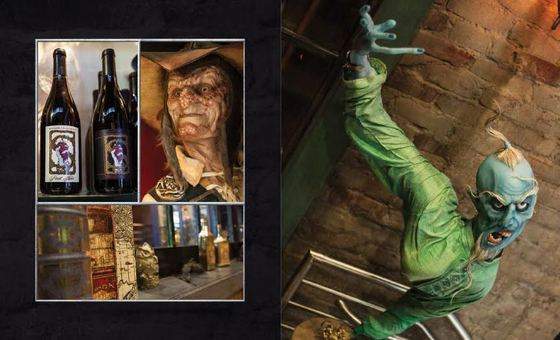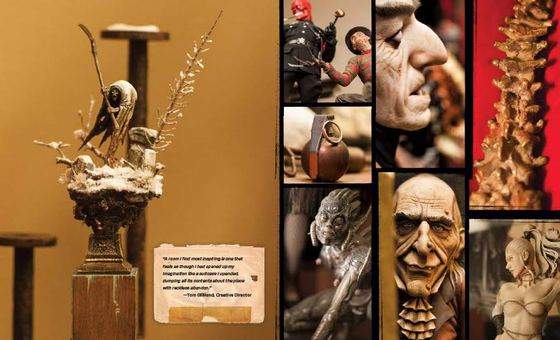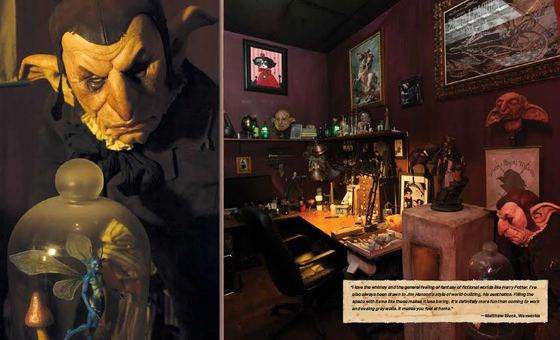Book Review: Inside the Sideshow Studio
 |
[All images reprinted from Inside the Sideshow Studio by Sideshow Collectibles published by Insight Editions. Copyright ? 2015, Sideshow Collectibles.]
At virtually every convention where they have a presence, Sideshow Collectibles’ booth is one of the ones to visit, with its wide array of everything from life-size Terminators to Marvel busts and highly detailed 12″ figures. They’ve come a long way from the days when they were known for 8″ Universal Monsters and 12″ historical figures (I still have my Crazy Horse, who was a mere $40 in the early aughts, and his scowl is genuinely frightening). Inside the Sideshow Studio is not a history of the company, which would be fun to read – I for one would like to know the economics behind moving from mass-market to much higher-end stuff almost exclusively, not to mention the ins and outs of their partnership with Weta.
But that’s a book that could never be written in-house. Inside the Sideshow Studio is more of a coffee table book, though in ironic contrast to Sideshow’s modern output, it is half the size and a much more affordable price point than most such tomes.
 |
The book mentions upfront that due to the secrecy required in dealing with licenses like Star Wars and Marvel movies, and the lead time required, guest tours are not something they generally do – yet it’s clear they want to show off their space, which is decorated like some sort of Jim Henson film, if the Henson company ever wanted to make a super-creepy movie about Santa’s workshop.
 |
If, like me, you keep a messy desk, the Sideshow book can be used as exhibit A for why that’s okay – throughout its pages, artists are quoted again and again as saying that a messy desk proves that they’re working, and that they care more about being productive then how tidy the workspace is. There’s also a company line that employees get to spend 20% of their time on projects that have nothing to do with Sideshow – in theory, these independent projects often spark ideas that will come back around to the Sideshow work. That’s an awfully nice idea, but I wonder about its use in practice.
In addition to the glossy photo pages, paper inserts are frequently glued by corner to larger images, usually spotlighting one aspect of the work compared to the final product – a pattern for Nathan Drake’s fabric jeans, for example, or a Poison Ivy sketch, or the breakdown of individual parts that need to be assembled to make a Premium Format Wonder Woman. We’re told each figure in its own way is one of a kind, as every handmade outfit will inherently be slightly different from the last.
 |
Given that artist William Stout writes the intro, and gushes about his fandom for the company, I’m a tad surprised they haven’t done more with him – a line of Stout dinosaurs would surely be a dream come true for many fans. I happen to know Bill a little bit and I know some previous companies’ work with him hasn’t always met with his satisfaction. Future collaboration hint, maybe?
Anyway, like I said, if you want discussion about Sideshow pricing itself out of the average collector’s income, that’s another story for another day. In the meantime, if their general product eludes your budget, nice pictures are the next best thing, and for $24.99, this is a book that offers them. Plus a feel-good philosophy behind them that stands in contrast to the “kids in Chinese factories” tale we hear so often about other toy companies.
Is it really, as the book’s sub-headline claims, “a modern Renaissance environment”? That seems like at least mild hyperbole – the Raphael and Michelangelo whom one is most reminded of here are Turtles, not painters – but the more accurate sub-header “making toys you want but can’t afford” isn’t as marketable, I guess.
We’re early for Christmas, but Inside the Sideshow Studio will work best as a metaphorical stocking stuffer for adults who understand the difference between looking and having.

